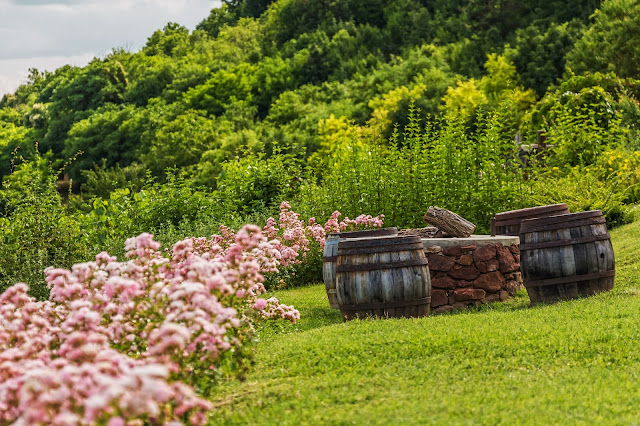 |
| Bild von Ulrike Leone auf Pixabay |
Fall often delivers brief cold spells with a few frost filled mornings, sandwiched between weeks of milder, frost-free conditions. The problem is that a single touch of frost can wipe out every tender annual growing in the garden. Fortunately, a little protection will enable frost-sensitive vegetables and herbs to survive a cold snap, and reward the resourceful gardener with an opportunity to enjoy extended harvests.
Something as simple as the transparent, fleecy, floating row covers used to shield plants from harmful insects can also prevent frost damage. Row covers trap the warmth that radiates up from the earth much like the way that a cloud cover holds temperatures and prevents frost from forming. Row covers offer a few degrees of protection, keeping tender annuals safe from light frost. Use the thicker grade covers for maximum benefit.
Late summer is the ideal time to sow cold-tolerant vegetables that will flourish in the fall and endure cold weather without complaint. Examples of hardy vegetables for fall gardening include kale, spinach, collards, broccoli, cauliflower, Brussels Sprouts, kohlrabi, turnips, cabbages, oriental greens, rutabagas, and some varieties of lettuce.
Once freezing conditions arrive, even cold-hardy crops will appreciate some protection if they remain in the garden. Cardboard boxes and fruit baskets can provide shelter to individual plants, while old sheets, blankets, and heavy plastic tarps will protect entire rows or beds of plants. Apply the coverings in the evening when freezes are forecast and remove them the following morning after the sun warms the air.
Another effective solution is to use a commercial variety of cloche or to set up a portable cold frame over the garden bed. Cloches include the heavy glass, bell-shaped jars, or variously styled and shaped rigid plastic devices.
One style of the cold frame consists of a tubular frame covered by a woven poly material with flaps for venting. You can also obtain sturdier cold frames made with aluminium framing and twin wall polycarbonate panels that lift up for venting. Regardless of the type of protection used to cover your plants you must remove it or provide venting during the day as temperatures rise.
Resourceful gardeners can combine a few discarded window sashes and bales of straw to create a simple makeshift cold frame. Just arrange the straw bales into a rectangular shape around a garden bed and lay the windows across the top to form an enclosed and insulated growing area. This setup will work great to keep a bed of leafy greens growing further into the winter.
Oddly enough, water can protect and insulate plants from the cold. Commercial orchards actually spray water and mist onto their trees to prevent frost damage.
In the home garden, you can employ plastic gallon jugs filled with water to provide protection. Place the containers around plants, under floating row covers or tarps, and inside of your cold frames.
The water will absorb and store heat during the day and release it at night to provide warmth for your plants. You’ll get the best results by painting the jugs black so that they’ll absorb more energy from the sun during the day. Incredibly, even if the water in the container freezes, it will continue to release a significant amount of heat energy into the surrounding area.
Certain vegetables will survive on their own in the garden through bitterly cold conditions. Leeks, kale, and collards frequently withstand harsh winters without any protection. Fall planted garlic and shallots will develop strong root systems in the fall, spend the winter underground, and then spring up at the earliest signs of the arrival of spring.
Many root crops including beets, carrots, turnips, rutabagas, and parsnips can be left in the garden protected with a thick layer of shredded leaves or straw. You can then continue harvesting as needed, provided that the ground doesn’t freeze and prevent digging. Complete your harvesting before spring arrives though since the quality will degrade once the roots resume growing and switch into seed production mode.
With proper planning and a little extra care, you can easily grow and harvest vegetables beyond the normal spring and summer seasons. Simply implement a few of the ideas presented in this article and you’ll soon enjoy your own homegrown, fresh produce much longer than usual, possibly even year-round.







